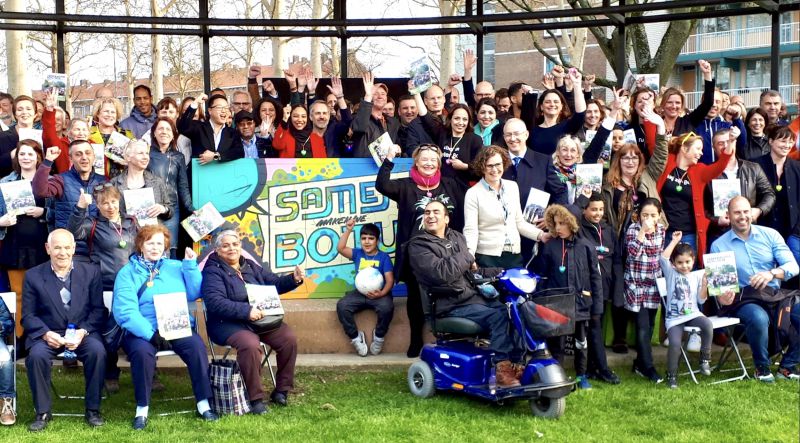The first edition of IABR–2018+2020–THE MISSING LINK, in the spring of 2018, was all about working toward prospects for action in the Bospolder-Tussendijken neighborhood, aka BoTu. This involved research by design, debates, and expert meetings, but also workshops in the neighborhood that explored concrete cases. In addition, an accessible program for awareness and activation was set up.
In the summer of 2018, Rotterdam’s newly elected Municipal Executive designated BoTu one of the city's first neighborhoods to become gas free in the coming years, in a process embedded in an integrated sustainable area approach. This means that the matter is considered urgent and, even better, that the plans have a likelihood of being implemented. In addition, Mayor Ahmed Aboutaleb has asked the neighborhood to come up with a plan to bring BoTu, which is lagging behind socioeconomically, to the average level of Rotterdam in the next ten years.

picture: Arnoud Molenaar
In short: these are serious dynamics concerning both energy transition and its connection with major social challenges.
Toward 2020
On to the 2020 Biennale, we will work with all stakeholders in BoTu on implementation-oriented projects. We will draw up a plan for the district, design concrete solutions together with the residents and thus also develop skills in the neighborhood to ensure that when the work actually starts after 2020, BoTu will be able to own the energy transition. After all, the energy transition can only succeed if it is widely embraced and starts from the logic of the local residents. Only then will the energy transition actually become an inclusive urban project, aimed at maximizing social added value.
Example: Resilient School De Dakparkschool
The Board of Governors of the BOOR Foundation intends to turn primary school De Dakparkschool (formerly primary school De Boog) into BoTu’s first Resilient School. This is just one example of the way the energy transition is actually appropriated by the neighborhood, in this case by seizing the opportunity to improve the school’s indoor climate and design a climate-proof schoolyard. The roof will be converted into a collective solar roof to produce energy for the local residents and, last but not least, the whole process is used to make pupils more climate conscious as lessons on resilience are integrated into the curriculum.
The Resilient School is one of the ‘first generation’ projects that together will turn Bospolder-Tussendijken into an energy district in the coming years. This strategy is meant to ensure that the energy transition not only actually takes place, but also provides added value to the neighborhood, to all residents, as this is crucial to ensure the public support for the energy transition in this vulnerable area.
Everything, then, comes together in BoTu: social challenges and climate objectives, global tasks and concrete local tasks, the long-term perspective and the implementation of concrete projects in the here and now. Together they will add up to one of Rotterdam’s first energy neighborhoods.
In Bospolder-Tussendijken, the IABR–Atelier Rotterdam works with a growing number of partners: the Delfshaven Cooperative, the City of Rotterdam (including: Urban development, Social Development, Resilient Rotterdam, Stadsmarinier), the Metropolitan Region Rotterdam The Hague, Havensteder, ERA Contour, Rebel, BOOR Foundation & De Dakparkschool, De Speeldernis, Rotterdam Academy of Architecture, Veldacademie and many more.